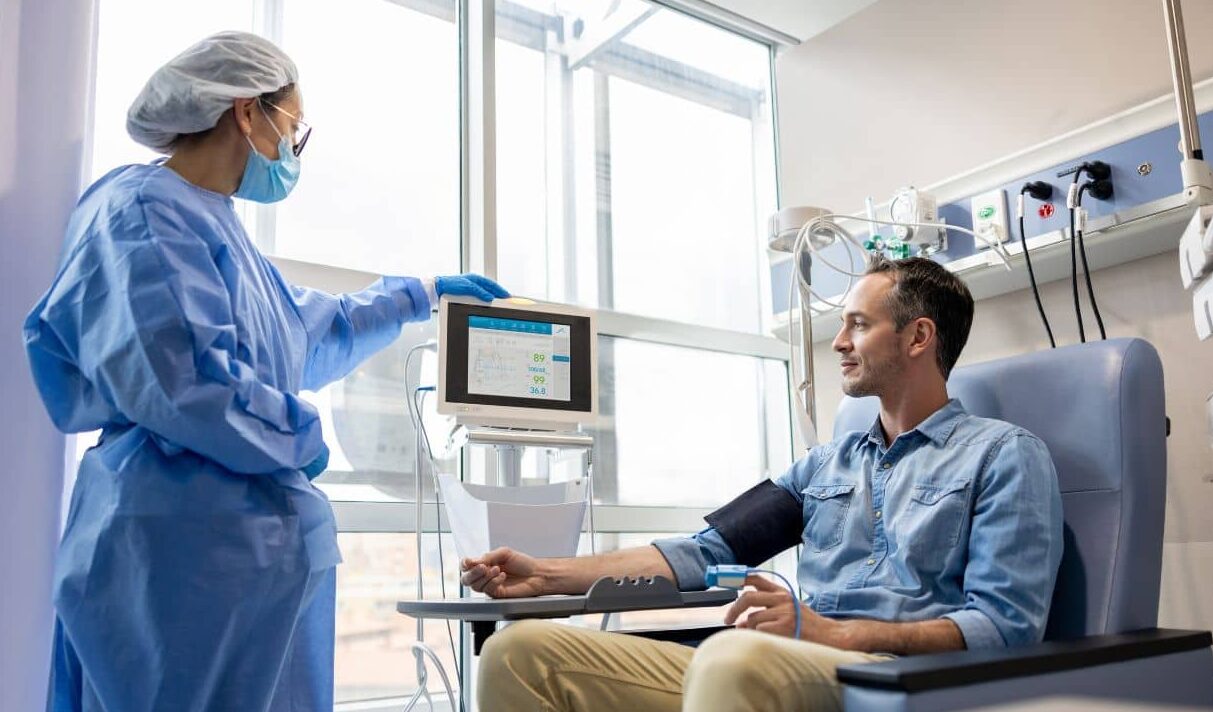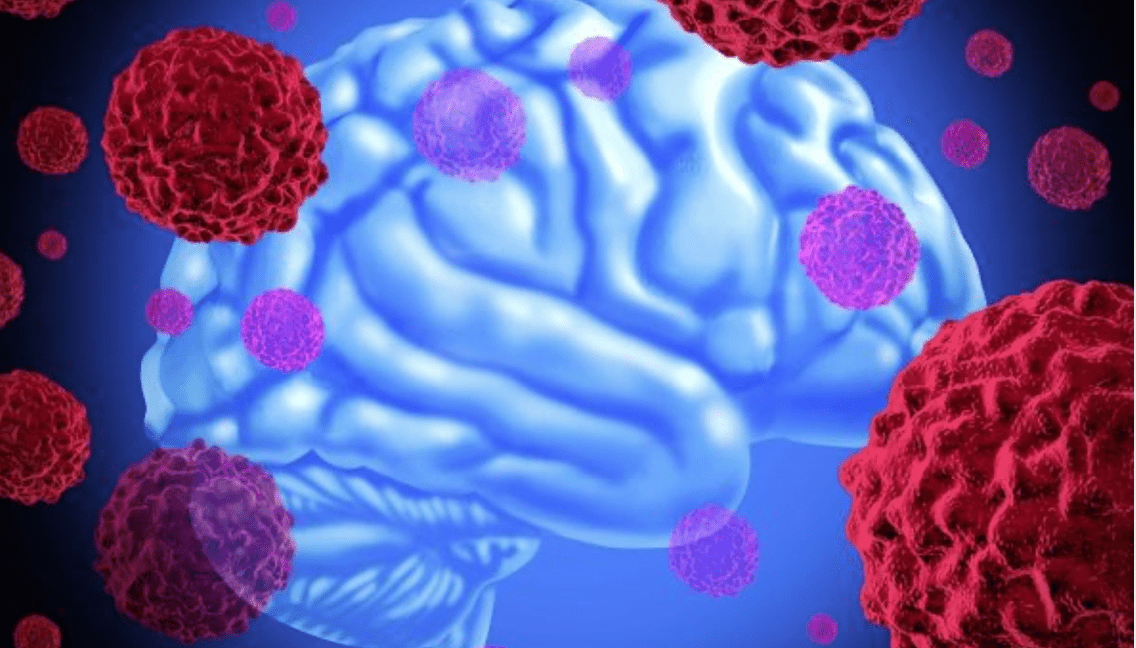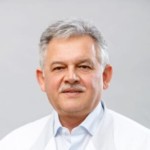-
 News
When glucose levels are low, chemotherapy ceases to affect cancer cells
News
When glucose levels are low, chemotherapy ceases to affect cancer cells
-
 News
Excessive treatment of prostate cancer in older men may reduce quality of life without increasing its duration
News
Excessive treatment of prostate cancer in older men may reduce quality of life without increasing its duration
-
 News
Brain cancer can be cured by viruses
News
Brain cancer can be cured by viruses
-
 News
Ways to reduce lymphatic pain in breast cancer have been found
News
Ways to reduce lymphatic pain in breast cancer have been found
-
 News
Scientists have turned bacteria into a powerful weapon against cancer
News
Scientists have turned bacteria into a powerful weapon against cancer
All news
Hodgkin's lymphoma treatment
Hodgkin’s lymphoma most commonly occurs in people between the ages of 15 and 24, and in people over the age of 60.
The most common symptom is swollen lymph nodes in the abdomen, groin, neck, or underarms.
Survival rates have improved over the past few decades due to the advanced tumor treatment in the world`s leading cancer centers. The current 5-year relative survival rate for all patients with Hodgkin’s lymphoma is 86%.
MedTour patients recommend clinics for the treatment of Hodgkin's lymphoma:
Doctors for the treatment of hodgkin's lymphoma
Frequently Asked Questions
Lymphoma is a type of blood cancer that affects a person when lymphocytes begin to be produced uncontrollably by the lymphatic tissue.
Classic Hodgkin’s lymphoma is any type of lymphoma that contains a specific type of cell called Reed—Berezovsky-Sternberg cells.
There are 4 types of classic Hodgkin’s lymphoma:
- Nodular sclerosing Hodgkin’s lymphoma — 70 out of every 100 cases
- Mixed Hodgkin’s lymphoma — 25 out of 100 cases
- Lymphocyte-rich Hodgkin’s lymphoma — about 5 in 100 cases
- Hodgkin’s lymphoma with a small number of lymphocytes — less than 1 case in 100.
All types of Hodgkin’s lymphoma are treated the same way.
If the doctor does not find Reed-Berezovsky-Sternberg cells in the tissue biopsy, the lymphoma is classified as non-Hodgkin’s. If Reed-Berezovsky-Sternberg cells are present, it is classified as Hodgkin’s lymphoma. They are relatively easy to identify under a microscope due to the fact that they are large and often contain several nuclei.
The definite cause of Hodgkin’s lymphoma is unknown.
However, the risk of developing this pathology increases with some factors:
- Genetics. In case relatives (parents or siblings) have had the disease,
- Age and gender. Hodgkin’s lymphoma is more common in men than in women. This can happen at any age. But most often it occurs between the ages of 20 and 40,
- The impact of viruses. Infection with the Epstein-Barr virus (EBV) or HIV,
- People with autoimmune diseases. This could be due to the medications people have to take, or the immune conditions they have,
- Some studies suggest an increased risk of Hodgkin’s lymphoma in people who smoke.
The most common sign of Hodgkin’s lymphoma is the enlargement of one or more lymph nodes. An enlarged lymph node may be in the neck, upper chest, armpit, abdomen, or groin. They usually do not cause pain.
Common symptoms of lymphoma:
- An unexplained rise in temperature,
- Unintentional weight loss,
- Night sweats,
- Generalized itching of the skin, especially after bathing or drinking alcohol,
- Fatigue,
- Pain in the lymph nodes after drinking alcohol,
- Abdominal pain or fullness due to an enlarged spleen,
- Shortness of breath, cough, or chest discomfort may be caused by lymph nodes in the chest area,
- Neurological problems,
- Increased susceptibility to infections,
- Symptoms of fever, chills, night sweats, and weight loss occur in 30% of people with Hodgkin’s lymphoma, usually in the elderly. These symptoms are usually associated with more advanced and aggressive conditions with a worse prognosis.
The diagnosis of Hodgkin’s lymphoma can only be made after histological examination.
If the biopsy shows that the patient has Hodgkin’s lymphoma, additional tests may be needed to determine the stage of the disease.
The best way to detect early disease is with annual check-ups. The most common symptom is the enlargement of one or more lymph nodes that do not usually bother the patient.
Regular check-ups can be helpful for people with known risk factors for lymphoma.
The innovative methods of diagnosis and treatment of Hodgkin’s lymphoma in leading clinics abroad
Treatment of Hodgkin’s lymphoma in foreign clinics today is highly effective. In 90% of cases, lymphogranulomatosis can be successfully treated in Israel, Turkey, and Europe using innovative methods and devices.
Advanced methods of diagnosing Hodgkin’s lymphoma abroad
CT scan
Experienced foreign doctors use this diagnostic method to find the exact localization of lymphoma and its stage. The layered image shows tumors up to 2 mm in size.
MRI
Magnetic resonance imaging is a high-quality 3-dimensional image that allows the doctor to get an ultra-accurate picture of the disease. At the same time, the radiation level of patients is significantly reduced.
PET-CT (Positron Emission Tomography)
PET-CT enables the doctor to see not only primary tumors but also metastases. Even if the lymph nodes are not enlarged, this diagnostic method makes the affected areas visible, since, before the test, doctors intravenously inject the patient with radioactive sugar, which is concentrated in cancer cells.
Lymph node biopsy
A biopsy is an integral diagnostic method. It is almost impossible to prescribe the treatment of Hodgkin’s lymphoma without a biopsy.
If the patient’s lymph node is close to the skin, a needle biopsy may be done. But in the case of a deep location, the surgeon performs a small surgery under anesthesia, during which he removes part or all of the affected lymph node.
Bone marrow biopsy
Experienced doctors of a foreign clinic take a bone marrow sample under anesthesia in just 15 minutes.
Laboratory diagnostics
A blood test helps doctors at foreign clinics to assess general health, the level of leukocytes, platelets, erythrocytes, kidney and liver function. Only experienced doctors are involved in the diagnosis of Hodgkin’s lymphoma abroad in order to minimize the likelihood of error.
Modern methods of Hodgkin’s lymphoma treatment in the best clinics abroad
Modern drugs
The best overseas hospitals offer patients a complete list of the latest drugs, including ones to stimulate the immune system.
Bone marrow transplant
Material for bone marrow transplantation can come from both the patient and the donor. In the case of donor bone marrow, experienced doctors abroad select the material carefully and individually. The conditions of clinics abroad are the highest standards of sterility since HEPA filters constantly purify the air in special wards-boxes.
Chemotherapy
Clinics abroad use only effective drugs, constantly monitoring the therapy process. After the first sessions of chemotherapy, an experienced physician will order a PET / CT scan to check the effectiveness of the treatment.
Radiotherapy
The doctor prescribes the number and duration of radiotherapy sessions individually, based on the patient’s health condition. Doctors perform exposure to radioactive radiation using the latest equipment, which practically does not affect the healthy tissues of the patient’s body.
Published:
Updated:


Information on this webpage verified by the medical expert








